Nepeta x. faassenii
Hey, get your cats straight! CatMINT is not catNIP.
Unlike its cousin catnip (Nepeta cataria), Faassen’s catmint does not drive felines wild, so you are free to plant it in your garden without fear of your yard turning into a hangout for tipsy tabbys.
All members of the Nepeta genus produce nepetalactone, the kitty intoxicant, but the amount in Faassen’s catmint is considerably less than the amount found in catnip.
So you may end up with some super-sensitive kitties in your yard, but not a convention.
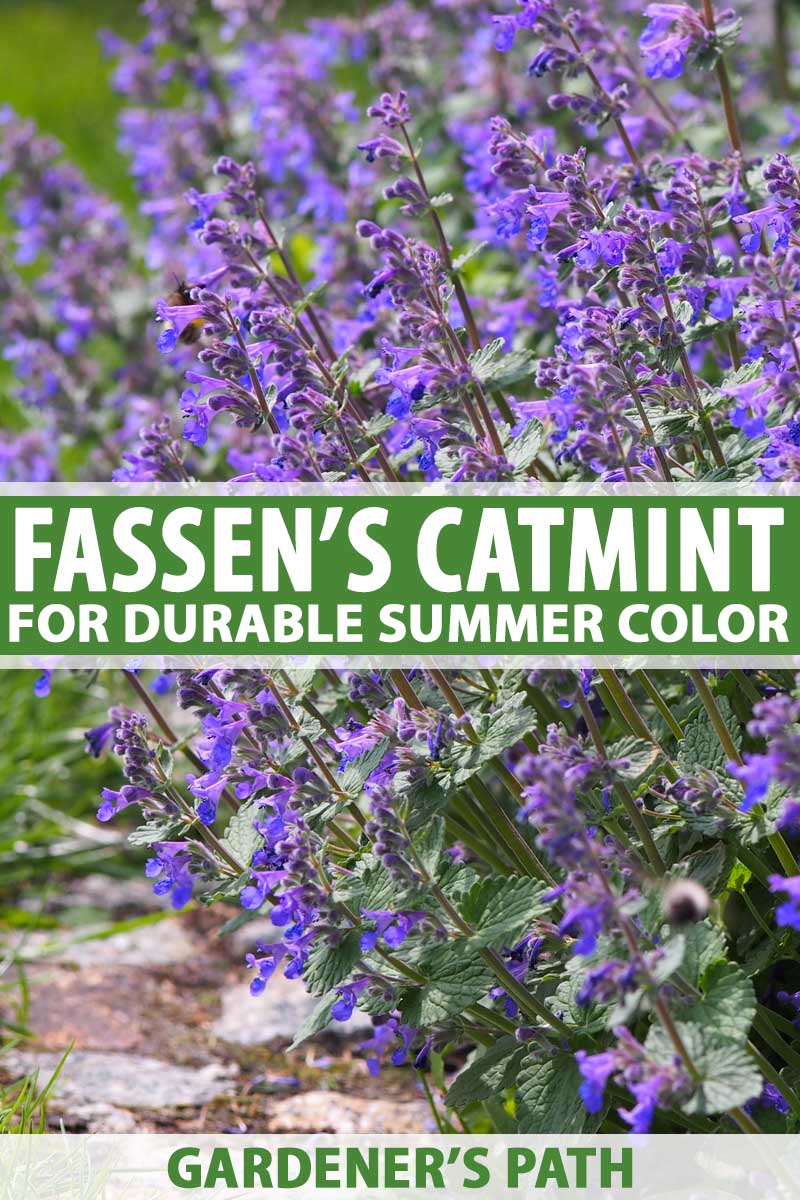
We link to vendors to help you find relevant products. If you buy from one of our links, we may earn a commission.
Catmint is a loosely mounded herbaceous perennial with attractive gray-green foliage.
Once established, it’s heat and drought tolerant, which is why I love it for my Austin garden.
What You’ll Learn
Cultivation and History
The name of the genus for this plant – Nepeta – derives from Nepete, an ancient Etruscan city now known as Nepi in Tuscany, Italy.
The plants of this genus are native to southern and eastern Europe, the Middle East, central Asia, and parts of China.
Nepeta is a genus within the mint (Lamiaceae) family and includes about 250 different species of catmints and catnips.
The N. x. Faassenii cultivar was first cultivated by Faassen Nurseries in Tegelen, Netherlands, as a hybrid of N. racemosa and N. nepetella (standard catmint). You may sometimes see N. x. Faassenii called N. mussinii.
Gardening books will tell you this is a full sun plant, but as we’ve discussed, full sun doesn’t always mean full sun.
In the brutal heat and humidity of Texas, for example, it appreciates some shade. When planted in the shade, the plant will be a bit floppy, and function as a ground cover, which is just what I’m after.
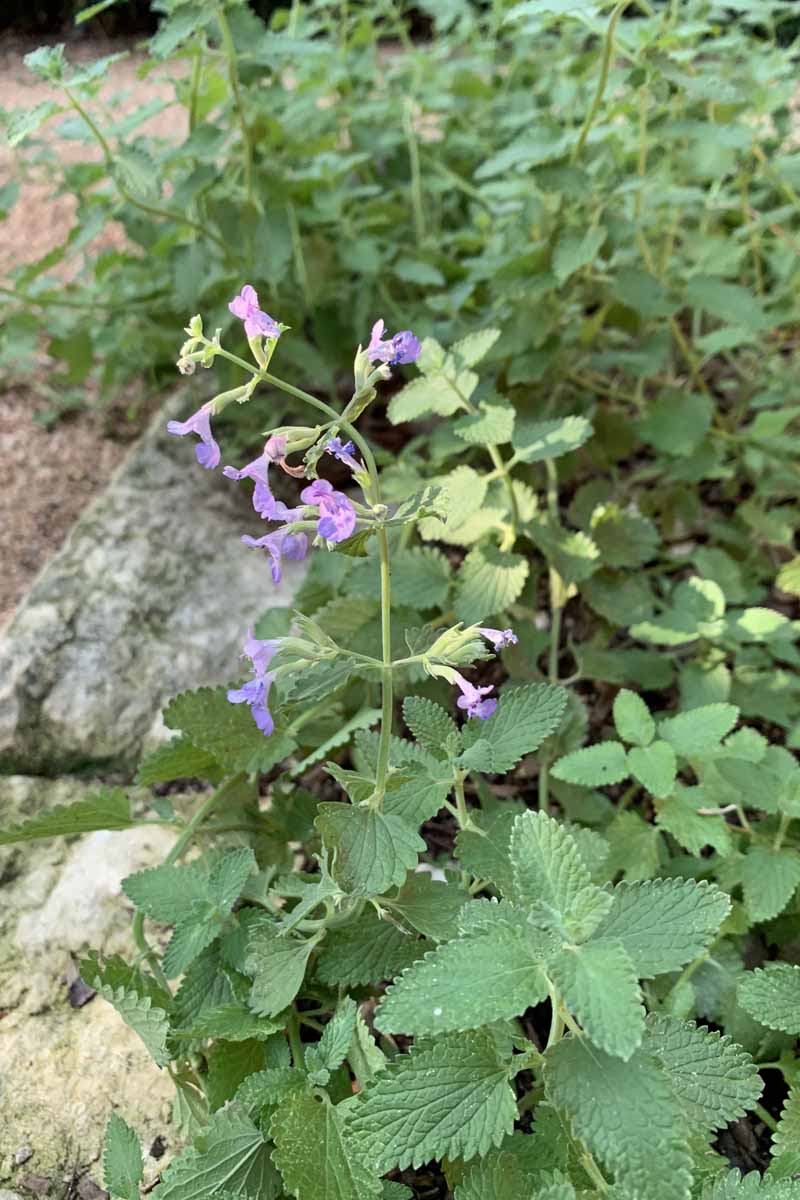
In sun, it’s more upright, growing from 12 to 24 inches tall. A single plant can grow to be 12 to 28 inches wide.
It produces spikes of 1/2-inch, lavender-blue flowers that bloom from late spring into fall.
The flowers attract bees, butterflies, and hummingbirds.
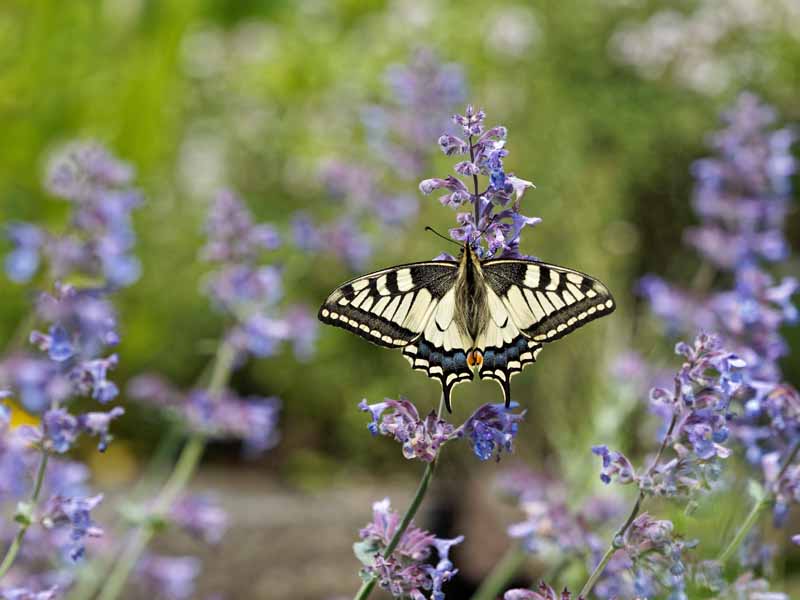
Like its mint cousins, it is a vigorous spreading herbaceous plant that has a tendency to spread if left unchecked.
Propagation
N. x. Faassenii is sterile, so while it may produce seeds, they are useless.
Glue ‘em to a piece of paper and call it art – that’s all you’ll get out of them.
Division
Divide Faassen’s catmint as you would any perennial. You can find our tips here.
From Cuttings
To propagate from cuttings, come springtime, take a sharp knife and cut a four- or five-inch piece of stem, just below a leaf. Strip off all but the top three to four leaves.
Fill a small pot with a rich potting mix; insert a pencil into the center of the pot to create a hole.
Dip the end of the cutting into powdered rooting hormone and insert into the hole in the potting mix. Water well.
From Seedlings/Transplanting
You may also be able to find seedlings in local garden centers and online.
To plant them, just dig a hole about the same size as the container the seedling came in, drop it in, backfill if necessary, and give it a lot of water for the first couple weeks.
How to Grow
As mentioned above, if you live in the South, you’ll likely want to plant Faassen’s catmint in a semi-shady spot.
Gardeners from other parts of the country can plant in a full sun location.
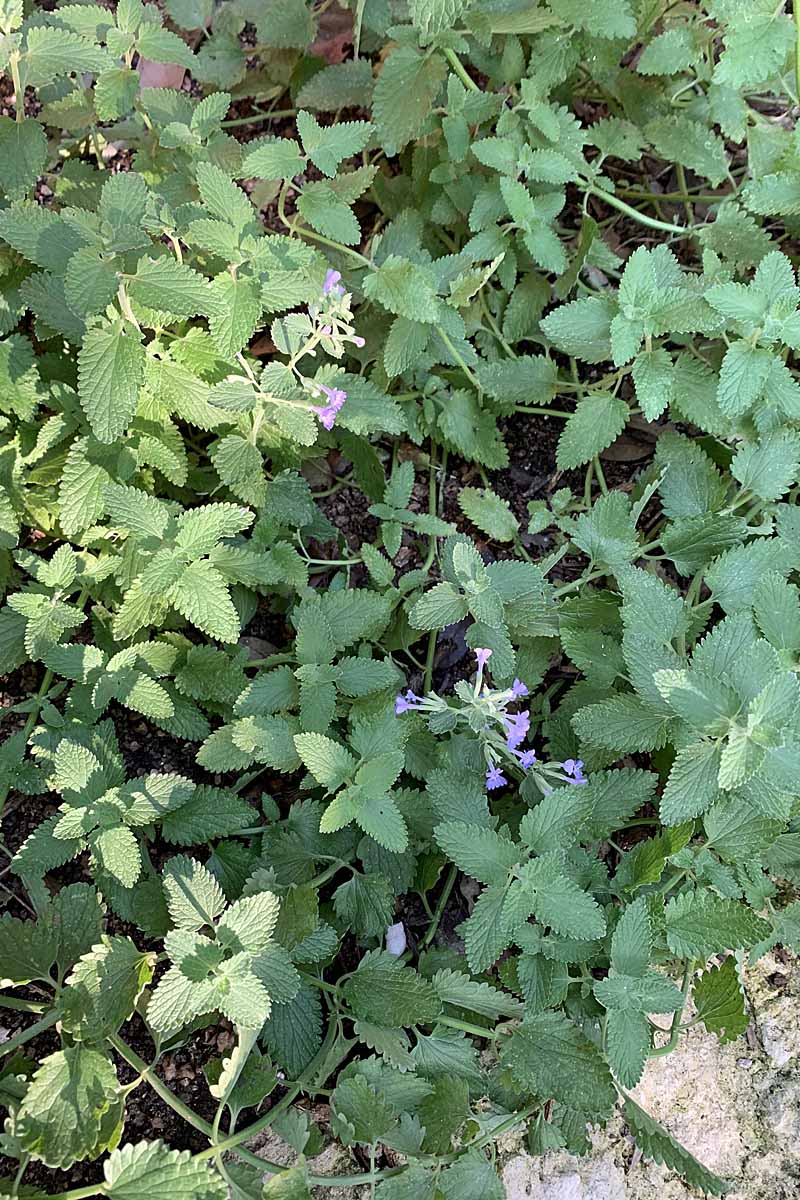
It appreciates well-drained soil, but this doesn’t have to be anything fancy – average, dry to medium is fine.
Water well until established, and then leave it alone. I water mine every couple weeks if we haven’t had any rain.
Growing Tips
- Plant in full sun or semi-shade, depending on your location
- No fancy soil required
- Water well until plants are established
Pruning and Maintenance
To encourage repeat blooming, trim the plants back by about half after the initial flush of flowers fades.
Cultivars to Select
‘Walker’s Low’ is the cultivar of N. x. Faassenii I most often see and hear about, though this moniker is a bit of a misnomer, because it can grow up to two feet tall.
It has silver-gray foliage, lavender-blue flowers and spreads two to three feet.
‘Walker’s Low’ via Nature Hills Nursery
The Perennial Plant Association named ‘Walker’s Low’ its “Perennial of the Year” in 2007.
You can find an 18- to 30-month-old plants in one-gallon containers at Nature Hills Nursery.
A more compact version of ‘Walker’s Low’ is ‘Jr. Walker,’ which can grow to about the same height as ‘Walker’s Low’ without as much spread.
Find them at your local plant centers at the beginning of spring.
Other cultivars to look for include:
- ‘Blue Wonder’ – 12-18 inches tall, blue flowers
- ‘Dropmore’ – 10-12 inches tall, blue flowers
- ‘Snowflake’ – 10-12 inches tall, white flowers
- ‘Six Hills Giant’ – two to three feet tall, light blue flowers
Managing Pests and Diseases
This plant is really quite trouble-free, but we’ll touch on a few problems you might encounter.
Insects
You may see aphids, leafhoppers, slugs, snails, spider mites, or whiteflies.
For aphids, blast them off with a stream of water.
In the case of leafhoppers, if the infestation is bad, you might have to pull up affected plants.
If it’s not too bad, use an insecticidal soap such as this one from Bonide, available from Arbico Organics.
You can get rid of slugs and snails with a bait such as Sloggo, copper strips, beer traps, or with crushed egg shell. Learn more about defeating slugs and snails.
Spider mites can be treated with neem oil.
If you see whiteflies, consider using pheromone traps.
Disease
In hot and humid conditions, gardeners might see disease caused by the bacterial pathogen Pseudomonas.
This can be controlled with a bactericide.
Best Uses
Catmint is often used in rock gardens, or as a border plant.
I have some growing in a small area as a ground cover.
Quick Reference Growing Chart
| Plant Type: | Herbaceous perennial | Flower Color: | Lavender |
| Native to: | Southern/eastern Europe, Middle East, central Asia, parts of China | Tolerance: | Deer and most other herbivores |
| Hardiness (USDA Zone): | 3-8 | Maintenance: | Low |
| Bloom Time: | Late spring to fall | Soil Type: | Average, not fussy |
| Exposure: | Full sun to part shade | Soil pH: | Acid to alkaline, 5.0-8.0 |
| Time to Maturity: | 2-3 months | Soil Drainage: | Well-draining, dry to medium moisture |
| Spacing: | 18 inches | Companion Planting: | Salvia |
| Planting Depth: | As deep as the container it came in | Uses: | Ground cover, rock gardens, borders |
| Height: | 12-24 inches | Attracts: | Bees, butterflies, hummingbirds |
| Spread: | 12-28 inches | Family: | Lamiaceae |
| Water Needs: | Low once established | Subfamily: | Nepetoideae |
| Growth Rate: | Fast | Genus: | Nepeta |
| Pests & Diseases: | Aphids, leafhoppers, slugs, snails, spider mites, whiteflies, pseudomonas bacterial infection | Species: | N. x faassenii |
Easy as Pie and Feline-Free
If you’re in need of a heat-loving, drought-tolerant, low-maintenance plant, consider Nepeta x. Faassenii.
Just plop it in well-drained soil, water it for a couple weeks, and then sit back and enjoy.
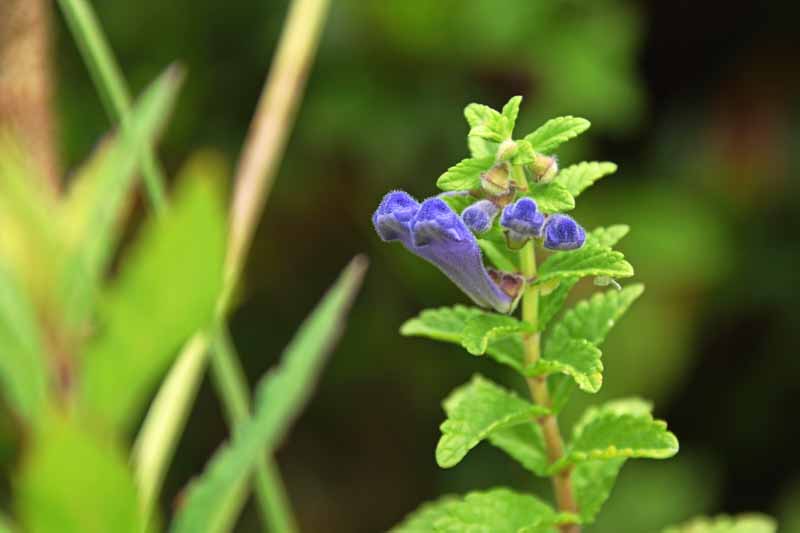
Remember that although it’s kin to catnip, it contains far less of the chemical compound that drives cats wild, so you can safely plant Faassen’s catmint without fearing a clowder of cats will descend upon your garden.
Do you have catmint in your garden? Share your tips and tricks in the comments section below!
And for more herb growing guides, check these out next:
- How to Grow Oregano
- How to Grow Mint in the Garden (Without It Taking Over)
- How to Grow Common Chicory
Photos by Gretchen Heber © Ask the Experts, LLC. ALL RIGHTS RESERVED. See our TOS for more details. Product photo via Nature Hills Nursery. Uncredited photos: Shutterstock.
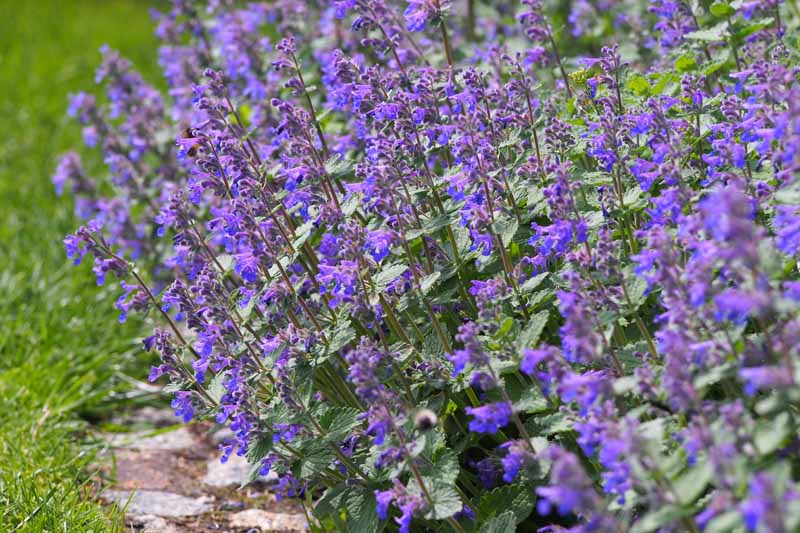
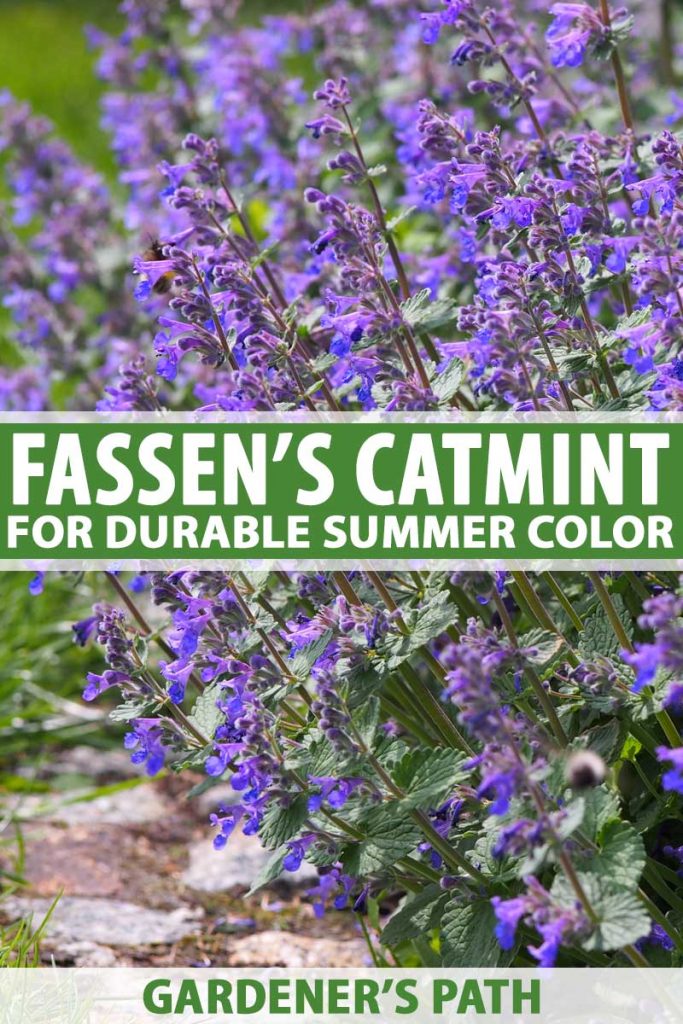
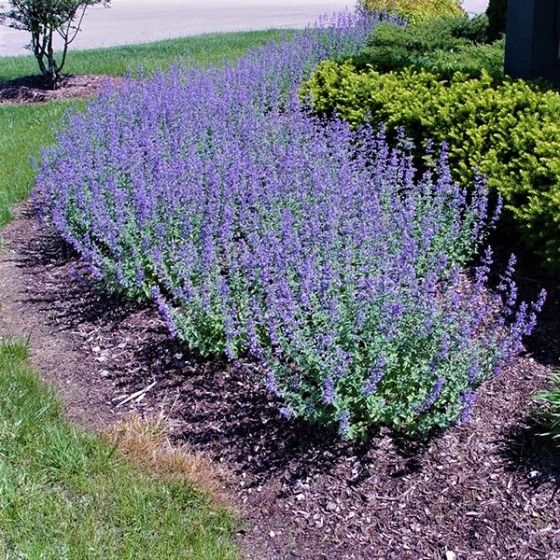
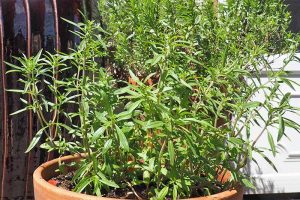
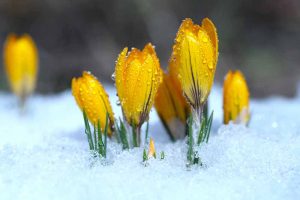
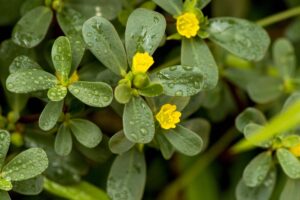
Thank you for this article. I’m trying to find out what – if anything – I can use Nepeta faassenii for as a tea or tincture or for any herbal remedies, since I’ve found it growing in abundance in my friend’s garden. Unfortunately, every site I check, it seems, just treats it as the equivalent of nepeta cataria. I even found an Etsy site advertising Nepeta faassenii with a jar labelled nepeta cataria, as though there’s no difference whatsoever chemically in the plants. Yours is the first article even to HINT that there’s some difference and that they might not… Read more »
Good for you for knowing to rely on botanical names rather than common names, since they can often be used interchangeably to talk about different (or very similar) plants! Unfortunately the scientific nomenclature can at times be a bit confusing as well, as N. racemosa is also sometimes referred to as “dwaft catnip” and N. mussinii is sometimes used interchangeably with N. faassenii, though it seems to depend who you ask. All of these are members of the Nepeta genus, which contains about 250 plants altogether. Though the quantity varies depending on the species, many plants in the Nepeta genus… Read more »
Will Catmint grow around Black Walnut trees? I have the “Kitten Around”
Thank you.
Unfortunately I don’t believe catmint is tolerant of juglone. This probably isn’t the best option to plant in the vicinity of black walnuts.